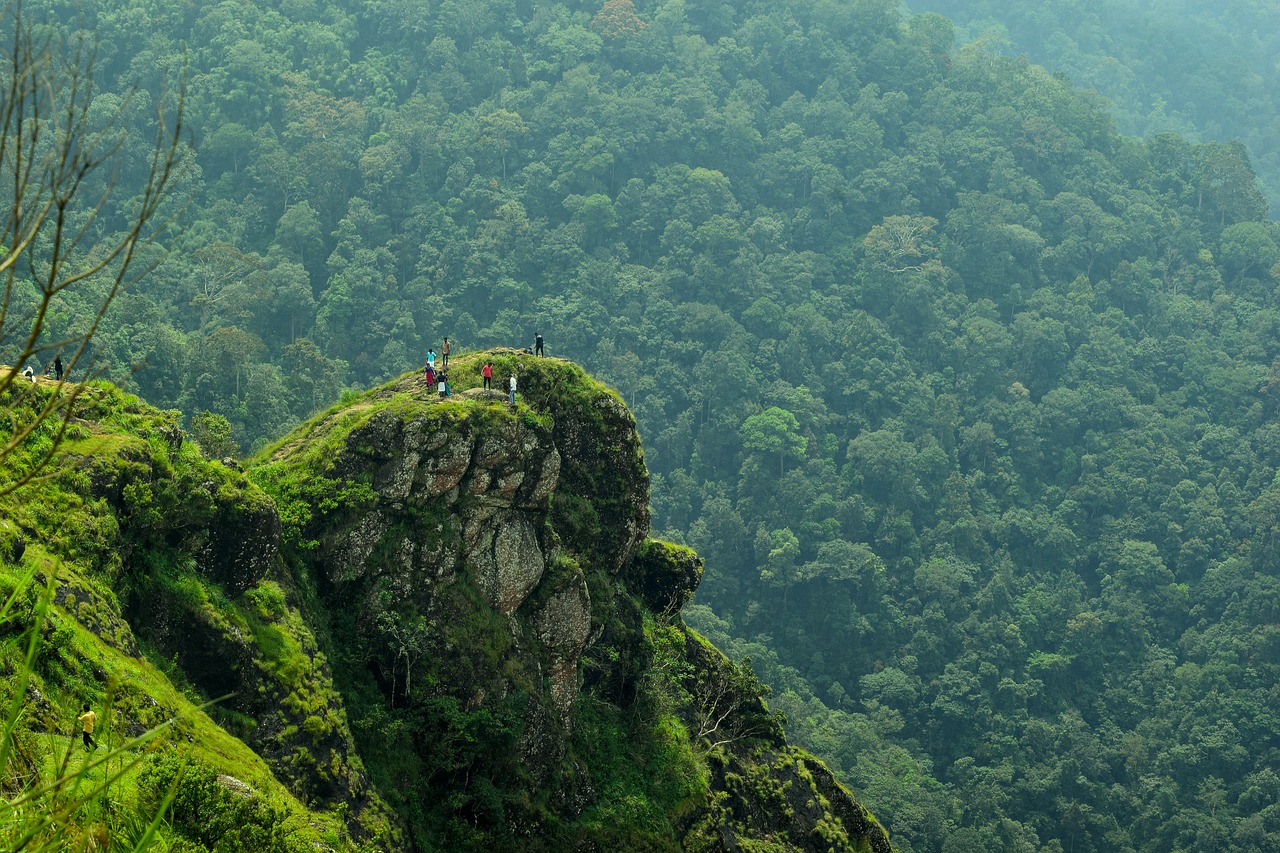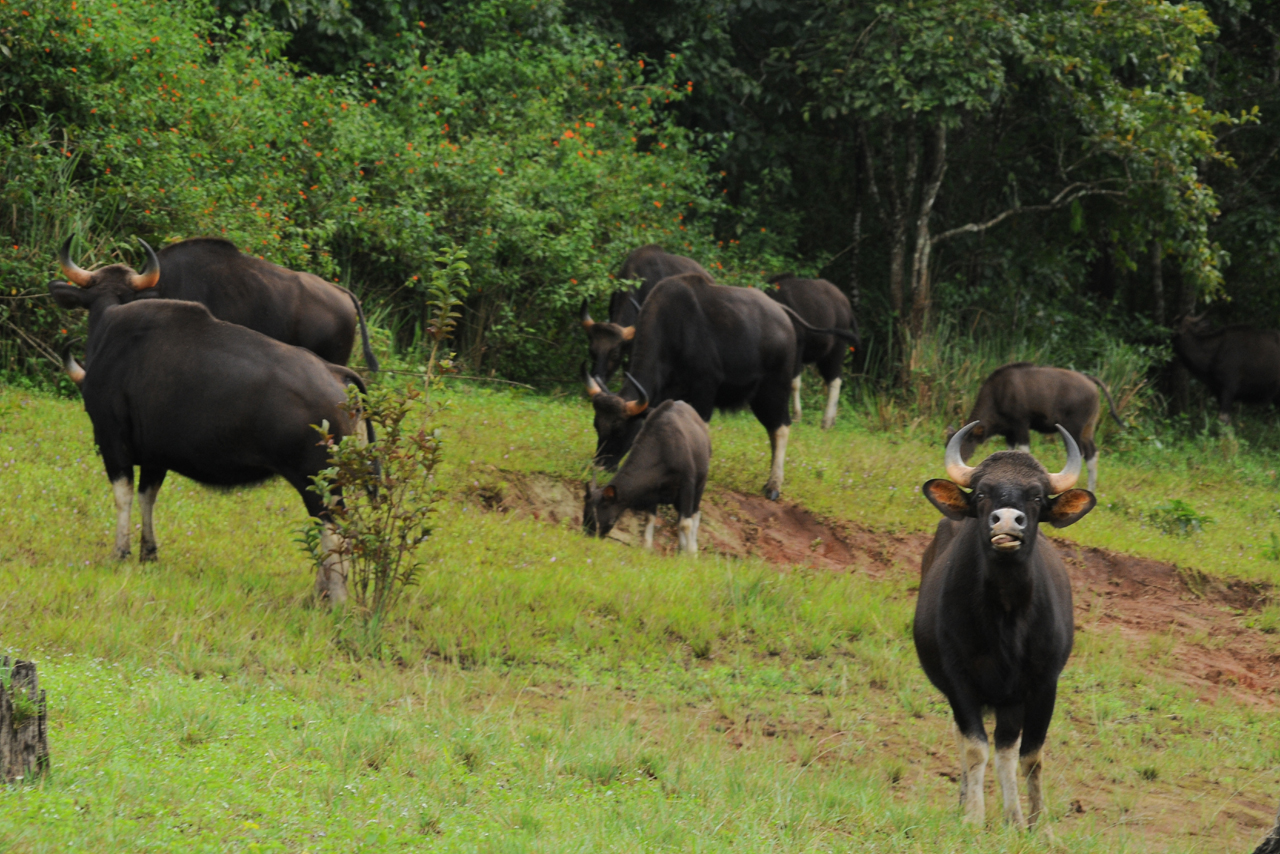The Ecological Imperative of Kerala Adventure
Kerala, famously known as 'God’s Own Country,' offers an adventure experience uniquely defined by its unparalleled ecological significance and a pioneering approach to responsible tourism. The state’s diverse landscape—a narrow slice of land situated between the Arabian Sea and the majestic Western Ghats—forms a crucial corridor of global biodiversity[1]. Adventure travel in Kerala is, therefore, not simply recreational; it is an immersion into a strictly managed and globally recognized ecological heritage.
A. Kerala: A Jewel in the UNESCO Western Ghats Heritage
The foundation of Kerala’s exceptional natural value rests on the Western Ghats, a mountain range that runs parallel to the western coast of the Indian peninsula. This entire range is officially recognized by UNESCO as a World Heritage Site, inscribed in 2012[2]. This designation is based on the region's extraordinary level of endemism and its pivotal role in maintaining global biodiversity[4]. The Western Ghats represent one of the eight most crucial global biodiversity hotspots, marked by lush evergreen forests and unique ecosystems like shola woodlands and high-altitude grasslands[4].
The ecological richness of Kerala is continuously validated through ongoing scientific assessment. Recent data indicates the state’s critical role in conservation, with Kerala accounting for the highest number of newly identified animal species in recent annual surveys, followed by Karnataka and Arunachal Pradesh[3]. This profusion of endemic flora and fauna, supported by high rainfall and varied terrain, elevates Kerala’s natural spaces beyond mere tourist sites, positioning them as fragile global assets requiring stringent protection[4]. The rigorous permit system and regulated access to trekking trails are direct conservation measures aimed at preserving the integrity of this globally recognized heritage site.
B. The Responsible Tourism (RT) Mission Framework
Kerala’s approach to adventure tourism is anchored in the state’s commitment to its Responsible Tourism (RT) Mission. This mission serves as the official governmental mandate, aiming to create destinations that are "better places for people to live in and better places for people to visit"[1]. This philosophy dictates that any high-impact activity, such as deep-jungle trekking, must maintain a careful balance between environmental conservation and the welfare of local communities[4].
The state’s renowned Ecotourism Model, exemplified by successful projects in areas like Periyar, actively integrates local communities, including indigenous tribes, into the tourism economy[6]. Locals are employed as expert guides, trackers, and operators, ensuring that economic benefits are directly channelled back into the regions while providing visitors with authentic cultural immersion and unparalleled ecological knowledge[6]. This framework dictates that the core experience for any traveler should be a meaningful connection with Kerala's unique natural beauty while upholding sustainable practices[4]. You can find unique ways to experience this culture and nature through platforms like Viator, which offers specialized tours, or check Viator for convenient shore excursions if arriving by cruise. If water bodies and villages are more your focus, consider the Viator Athirappally Waterfall Tour.
C. Overview of the Top 10 Adventure Hubs
The following analysis details ten premier adventure destinations across Kerala, balancing high-altitude endurance treks with specialized wildlife encounters, historical ascents, and aerial thrill sports[9]. These locations—ranging from the high peaks of Idukki to the rainforests of Palakkad—collectively represent the pinnacle of adventure tourism offerings in the Western Ghats. For a raw wilderness experience, be sure to look into a visit to the Viator Wild Elephant Village Jeep Tour near Munnar.
Essential Planning, Logistics, and Sustainable Travel Practices
Successfully embarking on an adventure in Kerala requires meticulous preparation, especially concerning seasonality, mandatory permits, and complex logistical coordination. Since many premier trekking sites are located within ecologically sensitive reserved forests and wildlife sanctuaries, adherence to official regulations is non-negotiable[11].
A. Optimal Seasonality and Weather Risks
Timing a trip to Kerala is crucial for maximizing the trekking experience. The weather patterns significantly dictate trail conditions and accessibility.
-
Best Time: The Cool and Dry Season (October–February)
The period immediately following the monsoon offers the most favorable conditions for hiking and high-altitude treks
[12].
The weather is generally pleasant, dry, and cool, which is ideal for demanding ascents like Meesapulimala and Agasthyaarkoodam. During September, immediately after the heavy rains subside, the landscape is exceptionally lush and green, offering stunning photographic opportunities
[12].
Seasonal Warnings
-
The Monsoon Challenge (June–September):
While the Western Ghats during the monsoon possess a unique, misty beauty, heavy rainfall makes many trails slippery and potentially dangerous. Trekkers must take serious precautions against leeches, which are highly active in forest zones, and be aware that many specific trekking routes are officially closed for safety
[13].
-
The Hot Season (March–May):
Temperatures can rise significantly, especially in the lowlands. For treks during this hot period, it is strongly advised to start early in the morning to avoid the midday heat and maintain hydration levels
[13].
B. Navigating the Permit Mandate: The Gatekeepers of the Western Ghats
The concept of adventure tourism in Kerala is interwoven with conservation efforts. Access to virtually all high-value trekking spots is strictly regulated by official bodies, primarily the Kerala Forest Department and the Kerala Forest Development Corporation (KFDC), or through dedicated Ecotourism portals
[11].
Permits are not optional; they are mandatory for entry into protected areas, which include reserved forests and wildlife sanctuaries
[11].
This strict regulatory environment is a consequence of the region's protected status. By severely limiting the number of visitors, the state manages the ecological footprint of tourism, ensuring that the sheer beauty and biodiversity remain intact for future generations
[4].
This necessary scarcity inherently increases the planning complexity and perceived value of securing an entry pass for popular trails like Chembra Peak, where a fixed daily quota applies
[15].
Early online booking is essential, particularly for highly restricted seasonal treks like Agasthyaarkoodam
[17].
Key Regulations for Premier Treks
| Destination |
Governing Body |
Key Restriction/Regulation |
Source |
| Agasthyaarkoodam Peak |
Kerala Forest Department |
Seasonal access (Jan–Mar). Foreign nationals generally prohibited. Annual permit release; slots fill quickly. |
[17] |
| Chembra Peak |
DTPC / Forest Department |
Strict daily quota (approx. 288 permits). Ascent often restricted to the heart-shaped lake. |
[15] |
| Eravikulam National Park |
Forest Department |
Visitor access limited to the Rajamalai tourism zone. Anamudi peak is restricted. |
[18] |
| Periyar Tiger Trail |
Periyar Tiger Reserve |
Minimum 2 persons, max 6 per group. Children under 12 not permitted. |
[20] |
| Silent Valley National Park |
Forest Department |
No overnight stay permitted. Trekking in the core area is strictly prohibited. |
[21] |
C. Comprehensive Travel Connectivity and Booking Strategy
Kerala’s air infrastructure provides robust connectivity, facilitating seamless transition from arrival to adventure. International airports in Kochi (CIAL) and Thiruvananthapuram are strategically located, providing relatively easy access to major inland hubs like Munnar, Wayanad, and Thekkady[22].
For global travelers planning their complex itinerary, leveraging aggregated flight search engines is highly recommended to secure competitive pricing and efficient routes to these gateway cities. Travelers can compare options and book effectively using services such as Aviasales, Wayaway, Cheapoair, or Kiwi. Given the investment required for complex trekking itineraries and the specific permits required, it is prudent to protect the journey against unforeseen logistical disruptions. Should flight delays or cancellations occur, specialist services like Airhelp and Compensair are available to manage disruption claims and provide essential support.
D. Accommodation: The Luxe-Adventure Trend
Kerala’s accommodation sector has evolved to meet the demands of the modern, ecologically conscious adventurer. Options range from basic tented camping necessary for multi-day treks (e.g., Periyar Tiger Trail) to luxury eco-friendly resorts and unique stays that serve as refined base camps. For instance, trekkers accessing Meesapulimala can select options ranging from tented stays at the Base Camp to rooms in the historically significant Rhodo Mansion[24].
In Thekkady, adjacent to the Periyar forests, the unique appeal of accommodation is maximized through properties offering treehouses, such as Noah's Nest Tree House[25]. These unique lodgings offer proximity to nature with necessary comforts, satisfying a market that demands both luxury and genuine wilderness immersion. To secure the most unique and well-reviewed accommodations, especially during the peak trekking season (October to February), comparison and advance booking on platforms like Booking.com, Trip.com, and Tripadvisor is mandatory.






